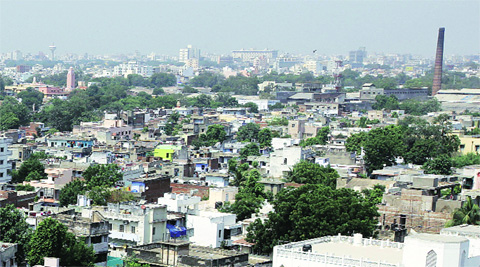
Nagpur has seen the maximum price rise of 8 per cent as compared to the preceding quarter, followed by Guwahati at 7.4 per cent, Pune at 7.3 per cent, Surat at 6.2 per cent and Ahmedabad at 3.1 per cent. Other notables include state capitals Patna at 6 per cent, Bhubaneswar at 4.7 per cent, Bhopal at 1.4 per cent, with Raipur and Dehradun hovering around the same levels. Contrast with the 3.2 per cent in Delhi, or the stagnant levels in Mumbai.
One factor driving the growth in these cities is the increased levels of economic activity. Industries are battling increased real estate costs in metro cities and wherever comparable quality was available at lower costs, they moved. This is particularly true for Pune that hosts the IT industry.
“Saturation of Tier I cities has necessitated the growth of Tier II and III cities which is supported by talent pool, sizeable and cheaper land and real estate options, relatively lower operating costs and conducive business environments. Prominent Tier II and III cities such as Ahmedabad, Jaipur, Visakhapatnam, Surat, Chandigarh, Vadodara, Indore, Coimbatore, Nagpur, Bhopal, Lucknow, Bhubaneswar, Kochi to name a few are witnessing increased interest by investors, particularly in the residential real estate market,” says Shveta Jain, Executive Director, Residential Services, Cushman & Wakefield India.
Jain lists crucial factors such as increased cosmopolitan population, increasing employment opportunities and improvement in infrastructure that have attracted investor interest. “Also, since Tier II and III cities offer investment options that are relatively cheaper than Tier I cities, individuals with limited risk appetite and investment size may opt for diversifying their investment portfolio.” In fact, Chandigarh, which is a Tier-III city is home to several IT companies, and has also led to the emergence of two satellite cities — Mohali in Punjab, and Panchkula in Haryana — that are now the new centres of investment.
Proximity to growth centres has generally seen a spurt in real estate activity. “A few Tier II and III cities have shown a spurt in both new launches and absorption in the last two years eg Bhiwadi and Vadodara. This growth has been fuelled by new employment generation. Investor interest in these cities is due to their proximity to well established cities of Gurgaon and Ahmedabad respectively, where the property prices have reached a high,” says Samir Jasuja, Founder and CEO, PropEquity.
The state capitals of Bhopal and Jaipur have seen heightened activity that is driven mainly by end-user demand. “In the case of Bhopal and Jaipur, the number of new launches has dropped but absorption has shown an increase. This demand is end-user driven. Similarly, cities of Indore and Kochi have witnessed a decline in their unsold inventory as the developers have curtailed new launches,” adds Jasuja.
Revision of circle rates has also led to increased transaction values being recorded at the registrar’s office. “In the case of Bhopal and Indore, the government has revised the circle rate, and transaction values that used to be under-reported have now seen an increase. The market has significant inventory and developers are pushing sales through discounts and interest subvention schemes,” says Manish Rajoria, Regional Head-Bhopal, Indore, Nagpur, Re/Max India.
Rajoria adds that the high price rise witnessed in Nagpur, as shown by the Residex is the result of catching up. “For the two years beginning 2012, Nagpur showed no rise. This was also a time when the Mihan cargo hub was being conceptualised, and the market was in standstill mode, waiting for signals. The current rise is making up for this phase.”
Another city, Dehradun, an administrative capital, has also seen a price increase, which can be attributed more to the limited availability of developable land parcels and the end-user demand from customers based in metros looking for holiday homes.
“Dehradun has limited land pockets. Residential land close to the city and in areas where construction is permissible is limited and only some land parcels are available. A large part of the lands are forest land and hills,” says Nazia Izuddin, president, SN Group, a Dehradun-based developer.
Given the disparate growth drivers in several of these cities, experts say the best strategy is to look for locations and developments that can lead to good capital appreciation.
INVESTMENT DESTINATIONS
“While investing in cities other than the metros, the focus should be on properties that have potential for assured rental yields and capital appreciation. This includes residential projects close to workplace catchments, industrial hubs and locations with good aspirational value,” says Om Ahuja, CEO-Residential Services, Jones Lang LaSalle India.
For a prospective investor looking for opportunities in Tier II and III cities, Jasuja ranks the following cities on growth parameters:
Bhiwadi: Proximity to Gurgaon, industrial development, proposed regional rapid transit system connecting it to Gurgaon and Delhi
Bhopal: Administrative capital, infrastructure like upcoming BRTS and revamped international airport.
Indore: Locational advantage in central India, infrastructure development like BRTS, IT super corridor, manufacturing hubs in Dewas and Pithampur SEZ.
Jaipur: Administrative capital, growing infrastructure like metro, BRTS, proposed ring road, upcoming special economic on Ajmer Road.
Vadodara: Proximity to Ahmedabad, industrial hubs in Makarpura, Nandesari etc, IT Park on NH-8.
Kochi: NRI interest, upcoming infrastructure like metro, widening of roads, IT parks in Kakkanaad, port-related developments like International Container Transshipment Terminal, LNG Terminal, Vytilla Mobility Hub.
To that Ahuja lists Coimbatore in Tamil Nadu owing to its position as a pre-eminent industrial hub and now also an IT hub. “It offers excellent business infrastructure, quality of life, a highly skilled work force as well as low cost of living, low pollution, a rapid pace of infrastructure development and a proactive government that is aggressively promoting the city.”
The other city on Ahuja’s radar is Visakhapatnam. A major port, it is the second largest city in Andhra Pradesh and also a major industrial centre and hub for the petroleum, steel and fertilizer industries. The city has IT and biotech SEZ and industrial developments like the steel and power plants in the south. The major growth corridor is northwards, along NH-5 towards Vizianagarm.
“While the Tier I cities are seeing the highest demand by investors, Tier II and Tier III cities are certainly gaining traction. For investors looking at non-metro and emerging cities, there are quite a few options,” adds Ahuja.

